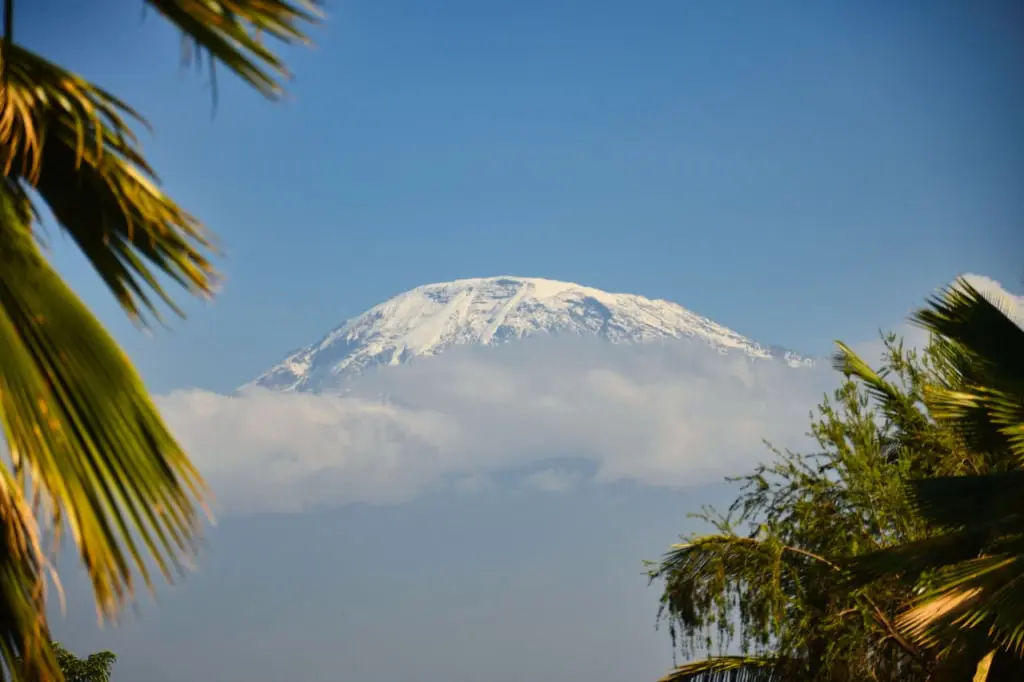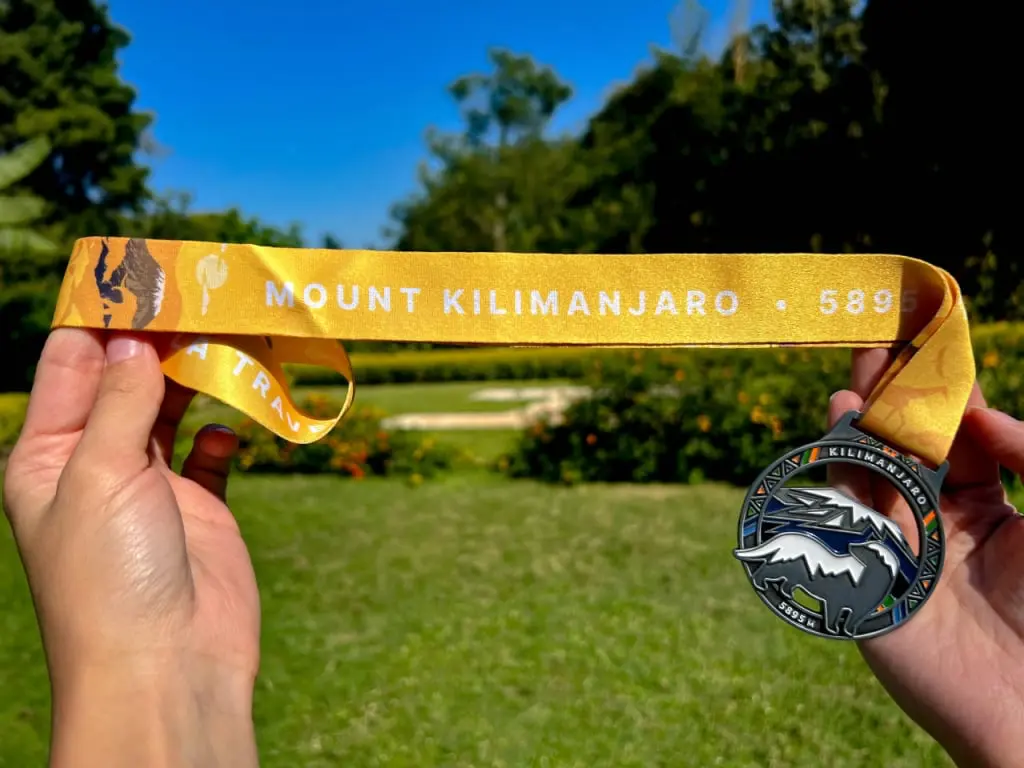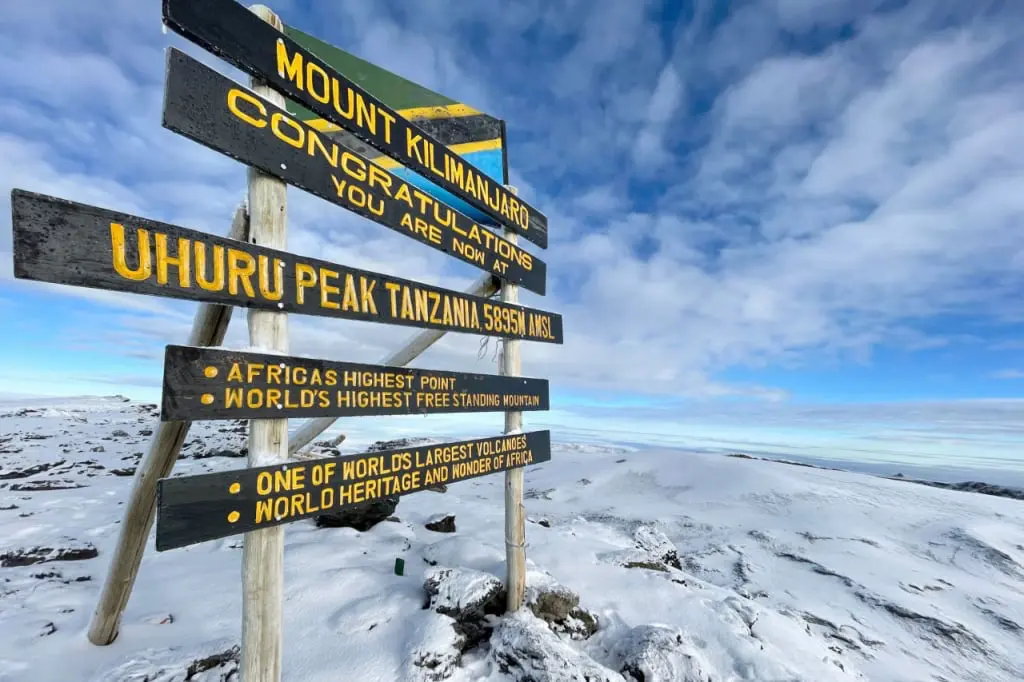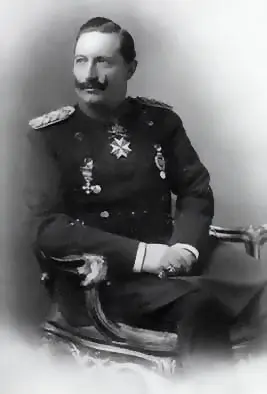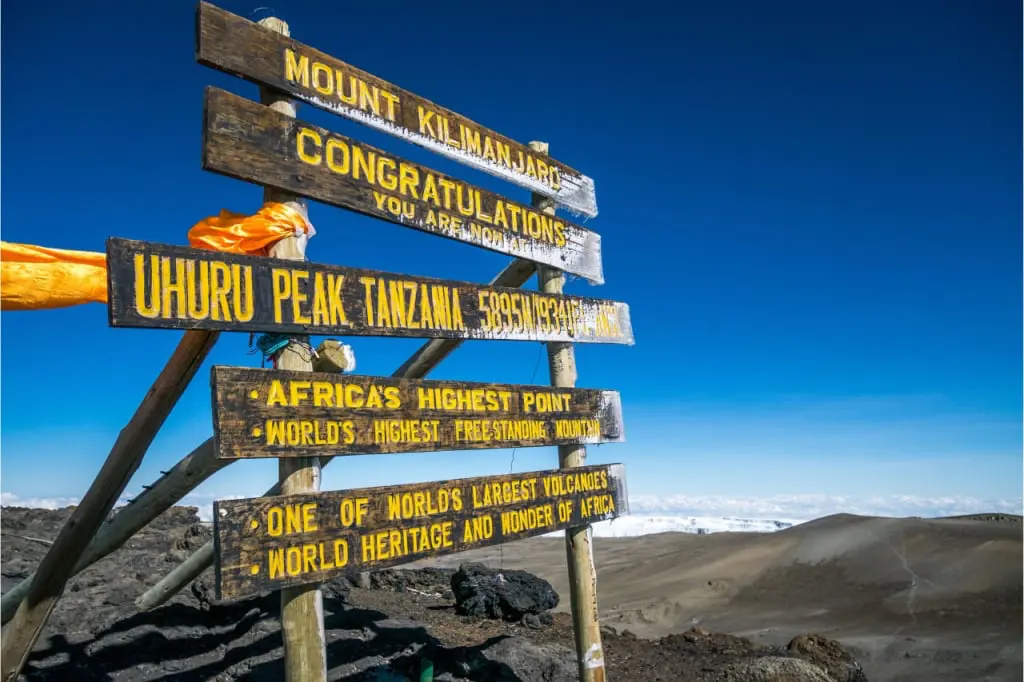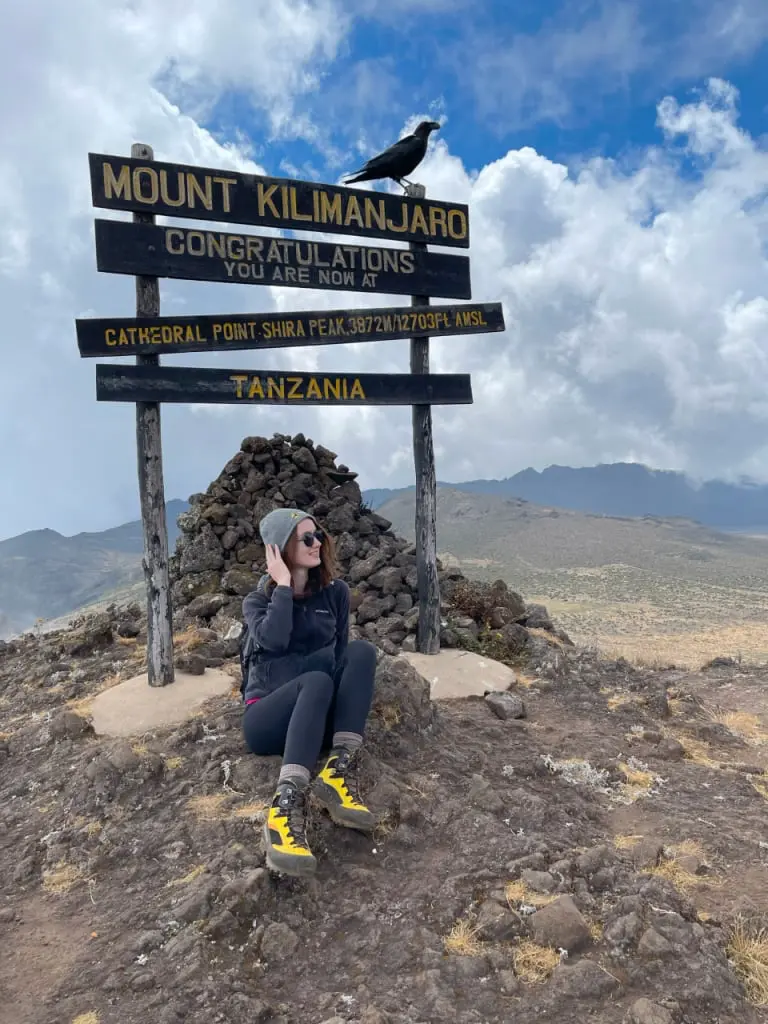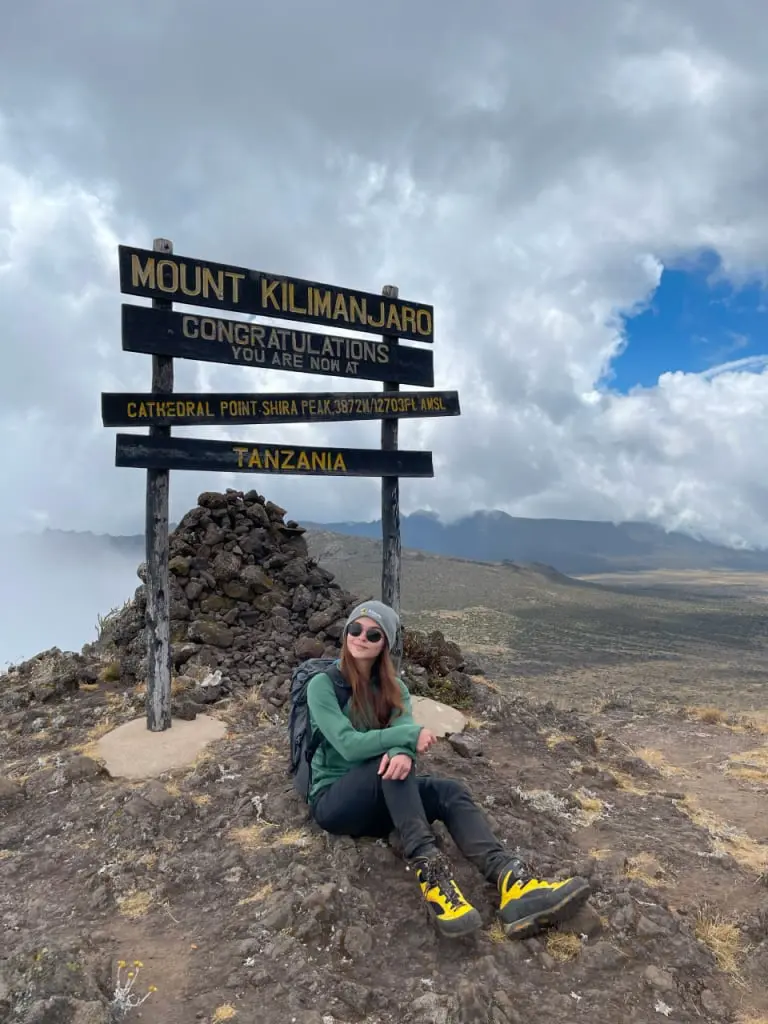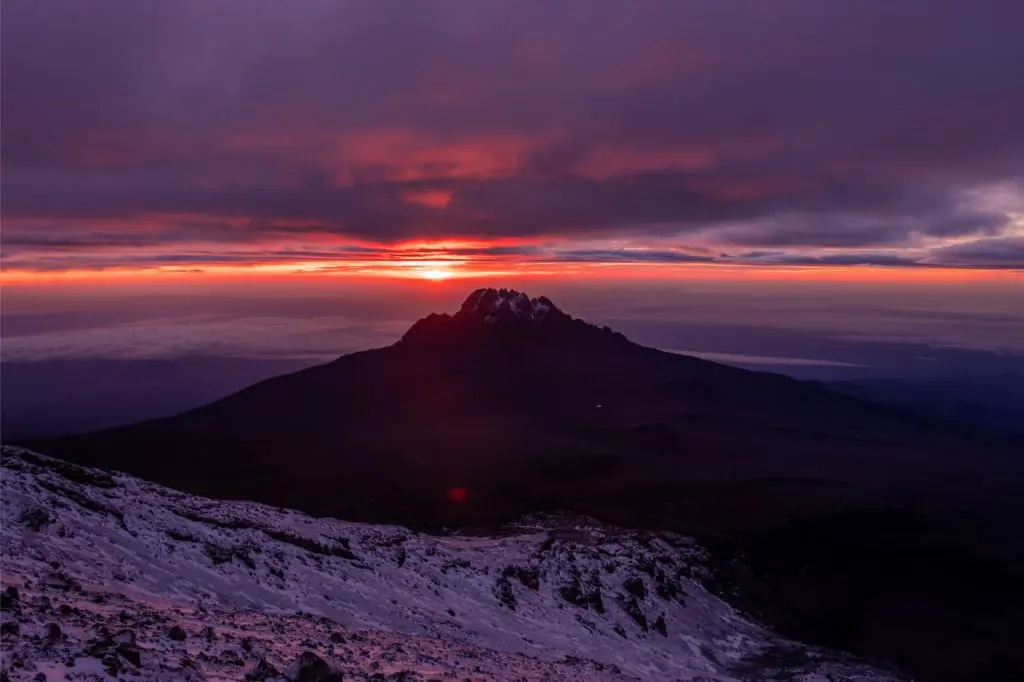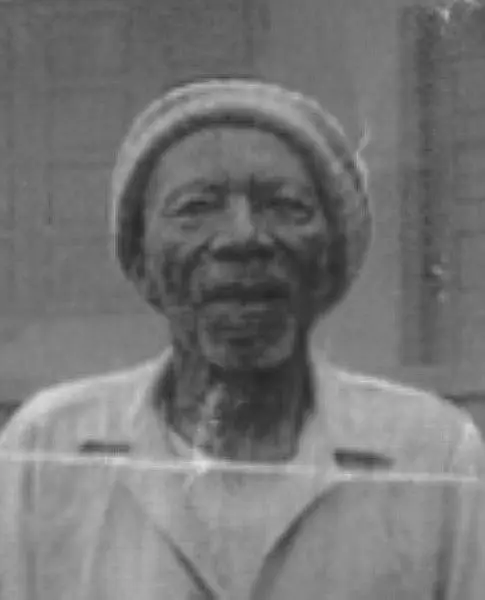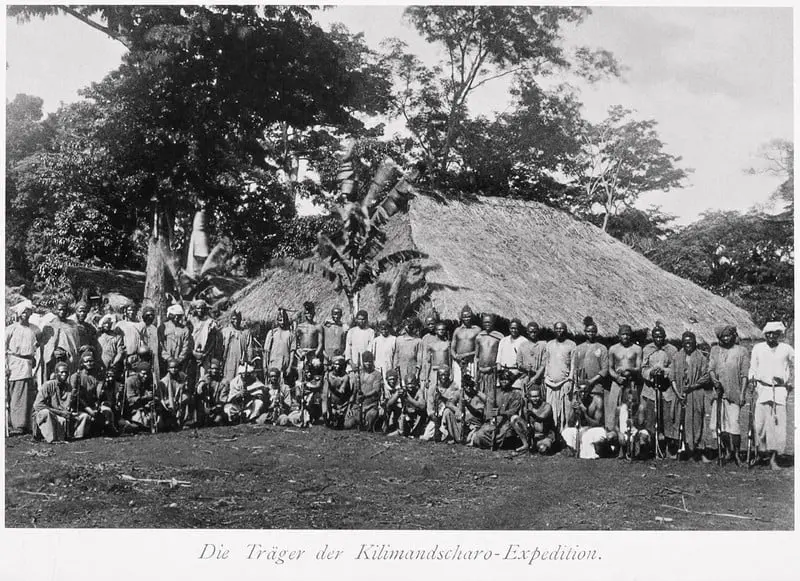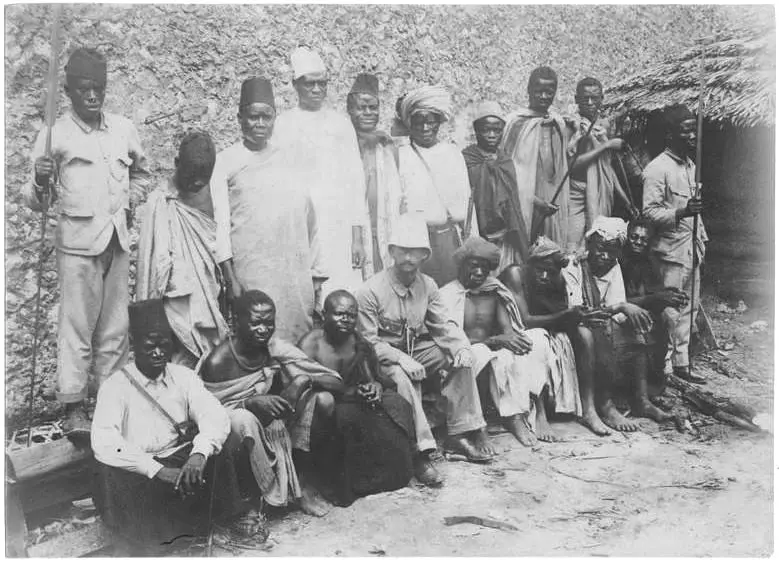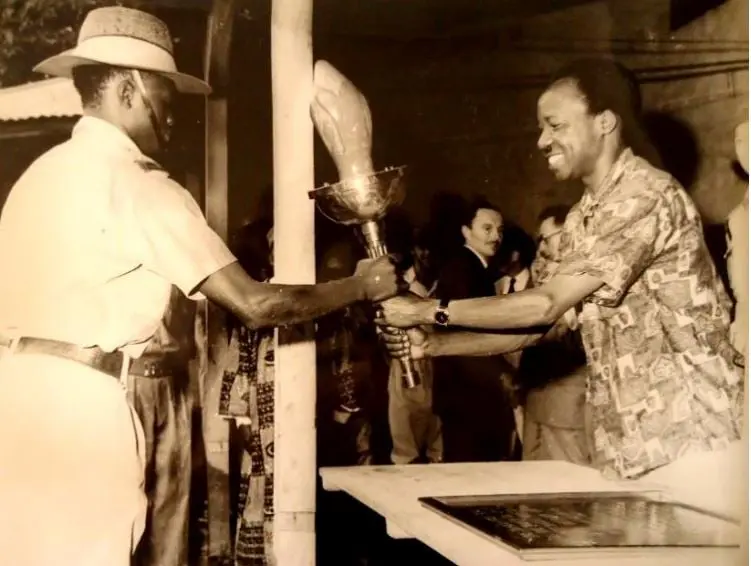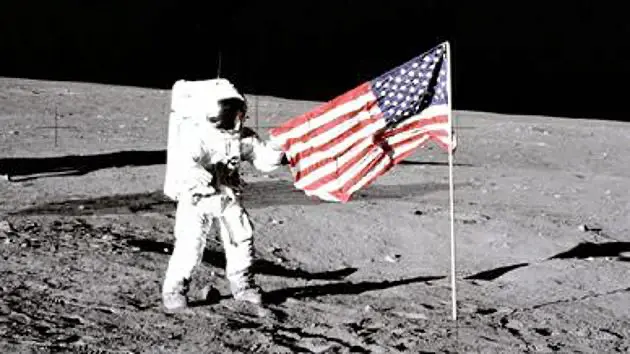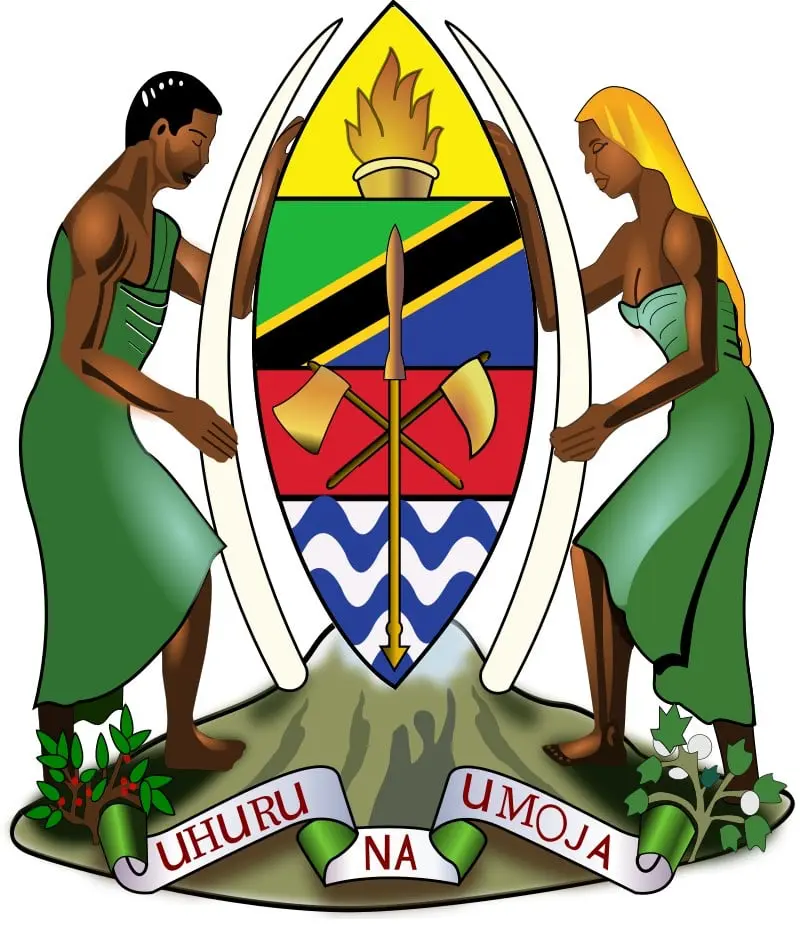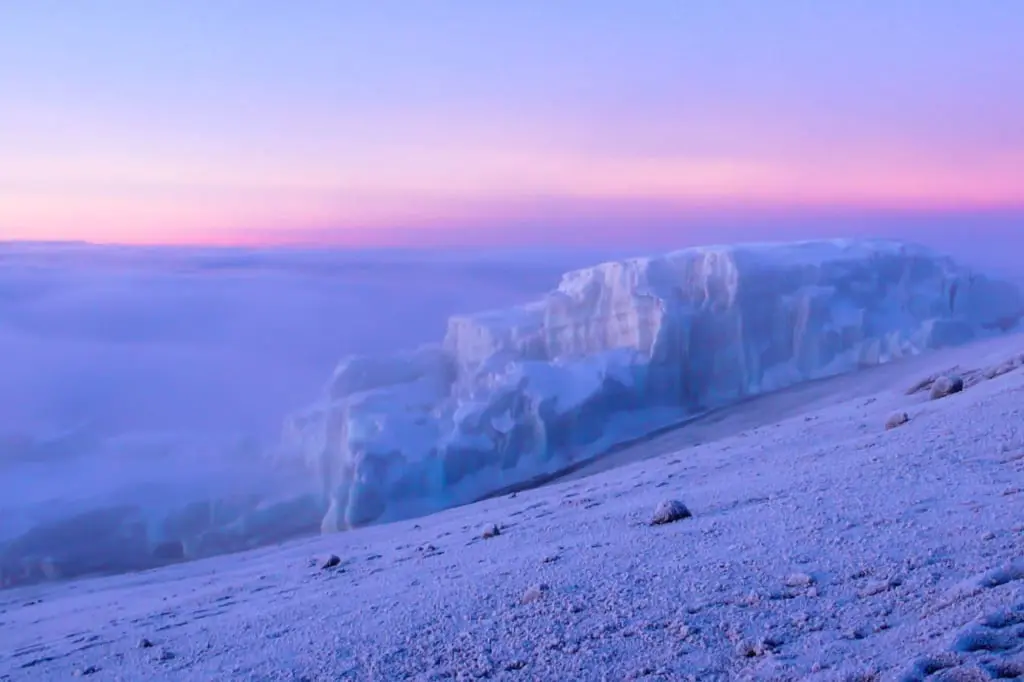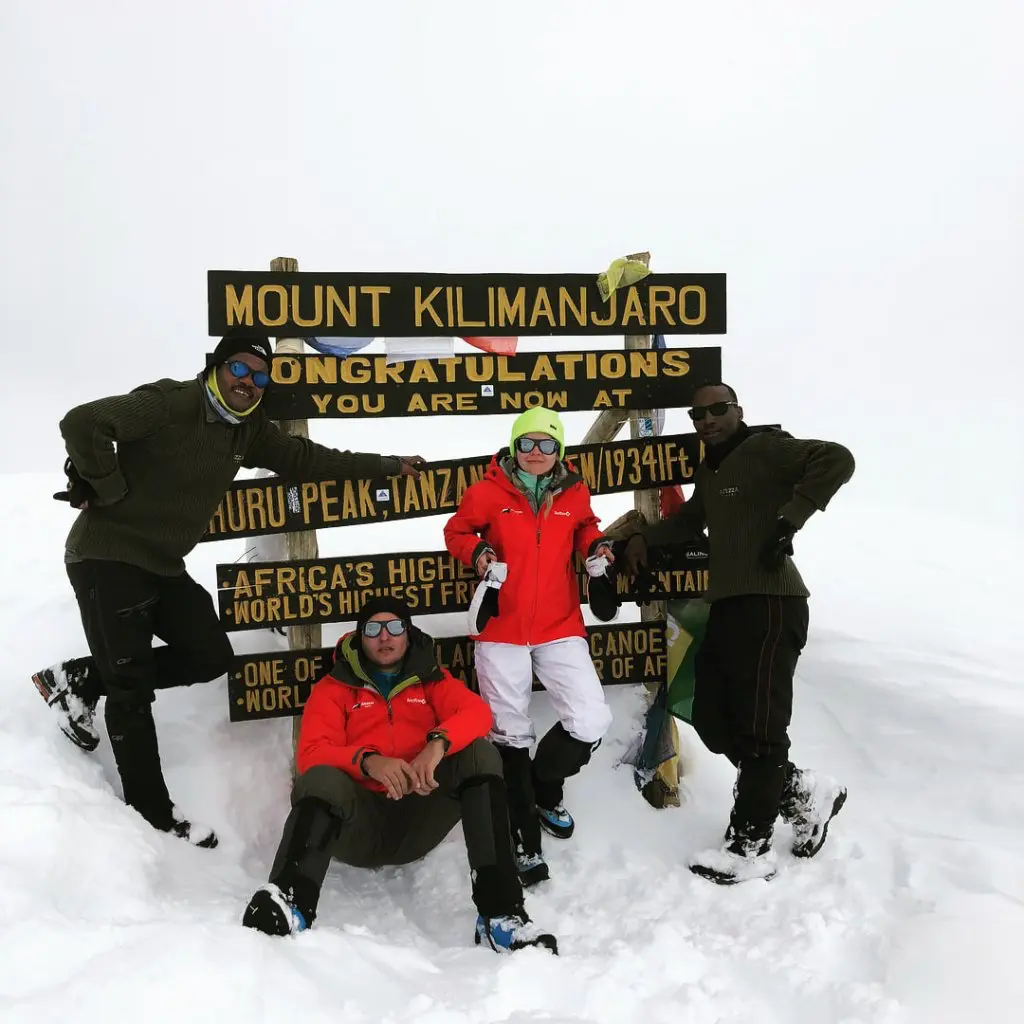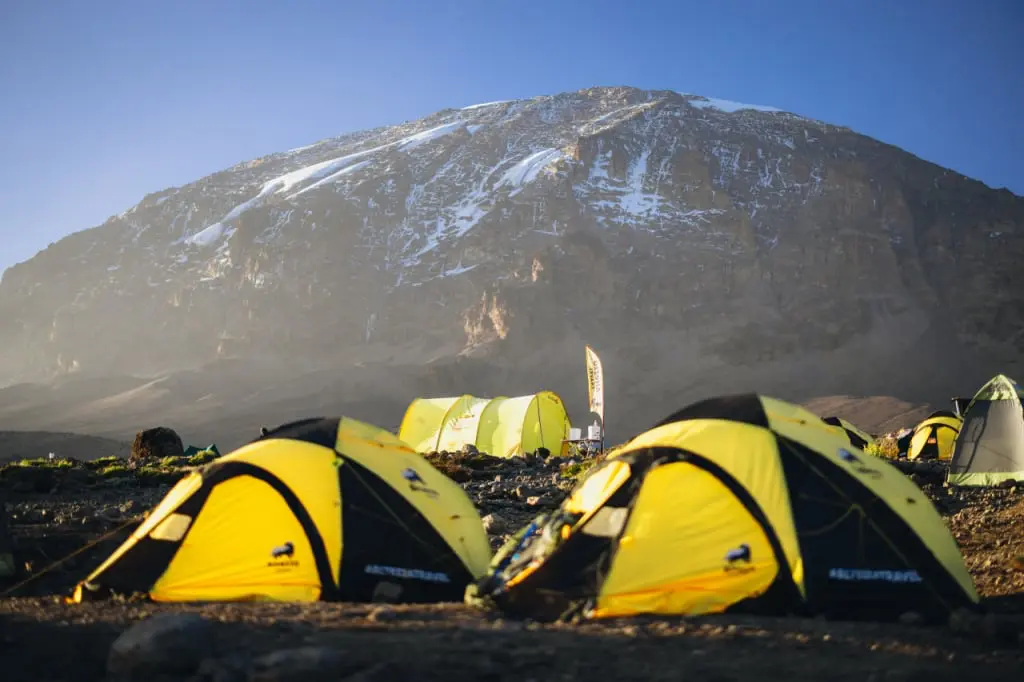Uhuru Peak is the highest summit of Mount Kilimanjaro and the tallest point in Africa. Many know about Mount Kilimanjaro, but not all are familiar with Uhuru Peak and its intriguing history. Here we delve deeper into the amazing facts about Uhuru Peak. Whether you plan to climb Kilimanjaro or are simply interested in mountains and African history, you will find this article interesting.
This article will cover:
- The names of peaks of famous mountains;
- Who named Kilimanjaro's highest peak Uhuru and why;
- Who was the first conqueror of this summit;
- What is the Uhuru Torch;
- What is the meaning of the word "Uhuru";
- How to climb Uhuru Peak, Mount Kilimanjaro and receive a certificate.
Characteristics of Uhuru Peak, Mount Kilimanjaro
The Uhuru Peak sign at the very top states that its height is 5895 meters (19,341 feet) above sea level. However, this number is not necessarily perfectly correct.
The first explorers climbed to the top of Kilimanjaro in 1889. Back then, they mistakenly measured its height as reaching 6010 meters (19,720 feet). Later, this figure was corrected to the current 5,895 meters above sea level (19,341 feet). The measurement remains the official height of Africa's highest mountain. This number is inscribed on the signpost at Uhuru Peak. It is also engraved in the medals awarded to those who successfully climb it.
In 2008, satellite measurement systems obtained more accurate data - 5891.8 meters. The number is often rounded to 5892 meters above sea level. If we consider the mountain's elevation above the solid rock base, we get an absolute height of 5891 meters. If we measure the distance to the peak from the Earth's center, then Uhuru Peak is 6,384,134 meters away, surpassing even the summit of Mt Everest, which is 6,382,414 meters from the Earth's center. Thus, Kilimanjaro's peak protrudes into space nearly two kilometers further from the center of our planet than the great Everest!
Uhuru peak sign
What else is written on the signpost at Uhuru Peak? Upon reaching the jauntily angled summit sign, you will read the following:
- MOUNT KILIMANJARO
- CONGRATULATIONS
- YOU ARE NOW AT
- UHURU PEAK, TANZANIA 5895M/19341FT AMSL
- AFRICA’S HIGHEST POINT
- WORLD’S HIGHEST FREESTANDING MOUNTAIN
- ONE OF THE WORLD’S LARGEST VOLCANOES
- WORLD HERITAGE AND WONDER OF AFRICA
Highest and lowest points
So, the breathtaking Uhuru Peak is the highest point in Tanzania and all of Africa. This earned it a place among the famous Seven Summits. Speaking of the highest points, it's worth mentioning the lowest ones too. Tanzania's lowest point is at the bottom of Lake Tanganyika at 1471 m (4,823 f) below its surface. It's the deepest African lake. The lowest above-the-water point in Africa is considered to be Lake Assal in Djibouti, situated at 155 m (509 f) below sea level.
If you want to climb Kilimanjaro and read this sign in person, we can organize your trip! At the end of the article, you will learn more about climbing Kilimanjaro with Altezza.
For other interesting details and specifics about Mount Kilimanjaro, check out our other articles. For example, "10 Facts About Africa's Highest Mountain" and "Where is Mt Kilimanjaro Located."
What does "Uhuru" mean?
Uhuru Peak was named in 1962, a year after Tanzania gained independence. At that time, Tanzania was still called Tanganyika. The name Uhuru, meaning 'freedom' in Swahili, was given to the country's highest peak to celebrate newly gained freedom.
The previous name of the peak
For over 60 years, the main peak of Kilimanjaro has been named Uhuru, which means Peak of Freedom. But it wasn’t always so. For over 70 years, the summit of Kilimanjaro bore the name of Kaiser Wilhelm, the last emperor of the German Empire. It was named by the German Hans Meyer, the first to reach Kilimanjaro's highest peak. This happened in 1889 when Tanganyika was under German rule. The Germans conducted explorations of these territories, including Mount Kilimanjaro and its surroundings.
The current Uhuru Peak was called Kaiser Wilhelm Peak from 1889 to 1962. First, until the defeat of the German Empire and the Germans' departure from Africa in 1918. After that, simply because there was no other name. Interestingly, from 1889 to 1918, Uhuru Peak was proudly called the highest point of "German soil."
 Get PDF
Get PDF
Peaks of famous mountains
The names of large mountains are known to many. The fame of the highest or most beautiful mountains goes to their names. However, few know the names of their main peaks, that is, the highest points. Meanwhile, some mountains have peaks with their own names.
Mount Everest, the highest mountain in the world (depending on how it is measured) does not have a separate name for its peak. But, many other mountains from the list of the world's highest have them. For example, the highest peak of Mount Lhotse is called Lhotse Main. The same goes for Mount Makalu — its highest point is called Makalu Main. The highest peak of the Japanese mountain Fuji is called Kengamine. The two-headed North American Denali has its highest point named the South Summit. And the highest point of the African mountain Kilimanjaro belongs to Uhuru Peak.
Uhuru Peak
Uhuru Peak remains largely unknown to many. Typically, mountain climbers only discover its name upon climbing Mount Kilimanjaro. They learn it while standing near the famous Uhuru signpost. There, the adventurers often take a photo to commemorate their successful Uhuru Peak summit attempt.
You can experience the beauty of Kilimanjaro through our captivating short film. It takes you on a journey through the diverse climatic zones of the "roof of Africa". You'll travel from dense tropical forests to icy arctic deserts. The film culminates with a stunning view of the snow-covered crater from Uhuru Peak.
Keep reading this article until the end to discover the most fascinating facts about Uhuru Peak.
Peaks of Kilimanjaro
Mount Kilimanjaro is not just a mountain, but a triple volcano. It's often said that this African peak is the world's tallest free-standing mountain. This is even stated on the signpost at Uhuru Peak. Indeed, Mount Kilimanjaro doesn't belong to any mountain range. This is due to volcanic activity that occurred several million years ago.
Shira
Initially, due to complex geological processes, the Shira volcano was formed. Later, it was followed by Mawenzi, and finally, Kibo. Each subsequent volcano in its eruption damaged the previous ones, and after its active phase, rose above them. Shira's crater collapsed about half a million years ago. Today, its highest peak is Johnsell Point, standing at 3962 meters (13,000 feet) above sea level. It is the highest elevation on the partially preserved eastern edge of the collapsed crater. However, another peak on Shira is more famous — Cathedral Point. It stands at 3872 meters (12,703 feet) above sea level and is a popular destination for climbers. You can see this peak while climbing Mount Kilimanjaro via Lemosho and Northern Circuit routes.
Mawenzi
Mawenzi, the second volcano to rise above the surrounding plains, is also partially destroyed. However, it is still quite impressive. The peak has been heavily weathered, consisting of split rocks strewn with stone debris characteristic of what's known as the arctic desert zone. However, there are no glaciers on Mawenzi. The shape of this volcano is indicated by its name – “kimawenze”. In the Chaga language of the local people, it means 'broken' or 'jagged.'
Mawenzi's highest peak is named after Hans Meyer, a German explorer who first conquered Mount Kilimanjaro. Ironically, he never managed to climb Mawenzi. The height of Hans Meyer Peak is 5148 meters (16,890 feet) above sea level. It's one of the highest peaks on the continent. If Mawenzi were considered a separate mountain, it would be the third-highest peak in Africa after Kibo and Kenya.
Kibo
The largest and highest volcano of Kilimanjaro is Kibo, formed several hundred thousand years ago. It was its last major eruption that destroyed the first Shira volcano. Today, Kibo remains a dormant volcano, one of the three volcanic cones of Kilimanjaro, with a very small chance of awakening. The highest point of Kibo is on the Kibo's crater rim. That point reaches 5895 meters (19,340 feet) above sea level and is known as Uhuru Peak. Thus, Uhuru is not a mountain peak in the conventional sense, but merely the highest elevation in the Kilimanjaro massif. Tens of thousands of hikers aim to reach this point every year on the summit day of their expeditions, but not everyone succeeds.
The first ascent of Kilimanjaro
The history of ascents to Africa's highest mountain began in the late 1840s. That's when the first Europeans discovered the snow and ice-covered volcano Kilimanjaro. Those were German missionaries and explorers Johannes Rebmann and Johann Ludwig Krapf. They first saw the "snow wonder of Africa" in 1848. In April of the following year, Rebmann approached the mountain again and tried to climb it but only reached the snowline. This was the first organized climb to the summit.
Early explorers
Over the next 40 years, due to high interest in the discovered mountains of Kilimanjaro and Kenya in East Africa, other explorers made journeys there. Among them were German explorer Carl Claus von der Decken, British missionary Charles New, Scottish geologist Joseph Thomson, English cartographer and naturalist Henry Hamilton Johnston, Hungarian explorer Count Samuel Teleki von Szek with Austrian geographer Ludwig von Höhnel, German explorer Hans Meyer, American traveler, doctor and ornithologist William Louis Abbott with German researcher Otto Ehrenfried Ehlers, and others. All of them failed, unable to overcome the snow lying on the way to the summit. Steep terrain, altitude sickness, and lack of very experienced climbers and guides also made the challenge of scaling the snow capped peaks even more formidable. The highest point reached by the most successful of them all, Meyer, was 5500 meters (18,045 feet), beyond which technical climbing equipment was required.
First successful summit
Finally, the tireless German Hans Meyer organized his third expedition in 1889. This time he was thoroughly prepared. The expedition took place from September 27 to October 9, 1889, along a route similar to today's Marangu.
The expedition included another European - an Austrian alpinist and high-altitude guide with experience in 1600 solo ascents, and the best expert on the Alps of his time, Ludwig Purtscheller. His knowledge was to help in overcoming the snow and ice cover of the mountain's peak. Along with the Europeans were 16 Africans from the Chaga tribe. They were accompanying the group to the heights where they were comfortable staying, then returning down. Only one local resident made the whole journey from the base of Kilimanjaro to Uhuru Peak with them despite the cruel weather and altitude sickness.
Yohani Kinyala Lauwo
In most sources, you can find the name Yohani Kinyala Lauwo. Allegedly, he was the first Tanzanian to reach the summit of Kilimanjaro. We believe this is not true and is refuted by simple logic. If Lauwo climbed Kilimanjaro in 1889, he would have been at least 125 years old at the time of his death in 1996, which is impossible.
Moreover, guide Lauwo could not recall the expedition and the details of the legendary ascent. The expedition was well-described in the diaries and other mentions of Meyer and Purtscheller. Confusion arose at the celebration of the centenary of ascents to Kilimanjaro in 1989. The local community needed living 'legends' and witnesses of that expedition. Subsequently, the implausible legend was actively supported by Lauwo's relatives and unscrupulous journalists. Now, this name is mentioned by superficial chroniclers of history.
Members of the Kilimanjaro Mountain Club, established in 1959, conducted their own investigation. They also found no evidence to support the claim that a guide by the name of Lauwo ascended Kilimanjaro with Meyer and Purtscheller.
Muini Amani
In reality, it is more likely that another Tanzanian accompanied Meyer and Purtscheller to the summit of Kilimanjaro. It was Muini Amani from the town of Pangani. He worked as a porter, cook, and guard. During the ascent, Muini Amani was presumably 20 years old. However, there is no data indicating that Amani ascended with the Europeans to the rim of Kibo's crater. Most likely, the Tanzanian, lacking warm clothing and equipment, waited for the group in the camp set up lower down. Meyer and Purtscheller reached Uhuru Peak on October 6, 1889.
Results of the expedition
The expedition members nearly accurately measured Kilimanjaro's height at 6010 meters. Their calculation was off by just over 100 meters. Hans Meyer, leading the expedition, named Kibo's highest peak after Kaiser Wilhelm. He also placed a small German imperial flag there. Ludwig Purtscheller, an alpinist who reached Mawenzi's second peak, left his mark in history too. That peak, at a height of 5120 meters (16,798 feet), is now named after him. Purtscheller mistakenly thought this was Mawenzi's highest point. In reality, Mawenzi's tallest peak is 5148 meters (16,889 feet) high. It has been named after Hans Meyer, honoring his role in the successful first expedition.
Over the following decades, several more people climbed Kilimanjaro. The second successful ascent to Kaiser Wilhelm Peak occurred 20 years later - in 1909. Gradually, less prepared climbers began ascending the mountain. By the late 1950s, when a route had been laid and huts had been built in the camps, approximately 1000 climbers had summited Uhuru Peak.
Uhuru Torch
By this time, Tanganyika longed for freedom and independence from Britain. After World War I, Britain took over the country, following Germany's defeat and a decision by the League of Nations. Britain's influence on Tanganyika started in 1919. It was indirect, yet it still oppressed the country's people. In 1959, Julius Nyerere, a notable politician, spoke to Tanganyika's Legislative Assembly. His words echoed the famous prayer of Saint Francis of Assisi. He said:
"We, the people of Tanganyika, would like to light a candle and put it on top of Mount Kilimanjaro which would shine beyond our borders giving hope where there was despair, love where there was hate, and dignity where before there was only humiliation."
First expedition
In 1961, Tanganyika became independent, establishing itself as a sovereign republic. To mark this milestone, a special expedition to Kilimanjaro Peak was planned. It was led by Lieutenant Alexander Donald Gwebes-Nyirenda, an officer of the Tanzanian People's Army. He is fondly remembered as Alex Nyirenda. His mission was to plant the Freedom Torch and Tanganyika's flag on the summit. However, on December 9, 1961, severe weather conditions on Kibo made it impossible to reach the peak. Strong winds and heavy snow were the main obstacles.
Second expedition
A year later, on December 9, 1962, the attempt was repeated. This was timed with the anniversary of Tanganyika's independence. This time, Alex Nyirenda led a group of servicemen successfully to Kaiser Wilhelm Peak. There, they planted the flag of free Tanganyika and lit a kerosene torch. This act symbolized the nation's new-found freedom. The lighting of the torch on the summit represented a beacon of freedom for Tanganyika. At that moment, the peak formerly known as Kaiser Wilhelm Peak was officially renamed Uhuru Peak, which means "Freedom Peak" in Swahili. It remains known by this name to this day.
A legendary photo was taken of Alex Nyirenda on December 9, 1962. It captured him securing the Freedom Torch at the top of Africa's highest mountain. Seven years later, when American astronauts landed on the Moon and planted the U.S. flag, similar iconic images were captured. Some Tanzanians believe that the idea for such a symbolic act was inspired by the 1962 photograph from Kilimanjaro.
The Torch of Freedom
In 1964, the People's Republic of Zanzibar and Pemba, recently liberated through a bloody revolution, joined the Republic of Tanganyika. This merger created the modern state of the United Republic of Tanzania. In the name "Tanzania," "Tan-" represents Tanganyika, and "-zan" represents Zanzibar. Uhuru Peak became the highest point of the new republic. A stone fragment from Kaiser Wilhelm Peak, brought to the German Emperor by Hans Meyer, is still kept in Potsdam, Germany, hidden from public view.
The Uhuru Torch has become one of Tanzania's national symbols. It appears on a one-shilling coin. Since then, the country's economic situation has changed, and these coins are no longer in use.
The Freedom Torch remains on the country's coat of arms. It rises above all other symbols, embodying the light of knowledge and enlightenment. It continues to symbolize freedom. The inscription on the coat of arms, "Uhuru na Umoja," means "Freedom and Unity." It signifies the unification of Tanzania's more than 130 different peoples.
Tanzania has a tradition of holding an annual torch race. This national campaign usually runs from March to October. Officials inspect various state facilities, and military personnel run in different parts of the country. They arrive with the torch at locations where new schools, hospitals, and other institutions are opened. These activities serve a dual purpose. Firstly, they are official anti-corruption inspections, addressing a significant issue in Tanzania. Secondly, they function as a patriotic campaign that highlights social issues. The tradition of taking the torch to Uhuru Peak, however, has been discontinued.
Climbing Kilimanjaro today. How to reach Uhuru Peak
Each year, about 50,000 people climb to Uhuru Peak. Expeditions to Kilimanjaro have become an integral part of tourism in Tanzania. Several trails lead to Uhuru Peak, with the most popular Kilimanjaro routes being:
- Lemosho route
- Marangu route, the oldest one
- Machame route
- Umbwe route, often used by professional athletes
- Rongai route
- The newest, Northern Circuit route
Kilimanjaro's climatic zones
Adventurers typically spend 5-7 days climbing Kilimanjaro to reach Uhuru Peak and return. The hike to Uhuru Peak offers an incredible variety of scenic beauty. They traverse various climatic zones: the rainforest, the heather moorland zone, the alpine desert, and ultimately, the arctic summit zone. The rainforest zone is lush and humid, followed by the moorland, where heather and shrubs dominate. Above this is the alpine desert, characterized by rocky terrain and sparse vegetation. The summit zone is a harsh, icy landscape, home to Kilimanjaro's rapidly diminishing glaciers. These glaciers are subject to melting, weathering, and sublimation. Scientists estimate that they may disappear entirely within the next 20 years.
Uhuru Peak is in the highest arctic zone. The temperature there is always below zero degrees Celsius, and severe frosts often occur. Snowfall is not uncommon at the peak. For example, in 2020, so much snow fell on Kilimanjaro's summit that access to Uhuru Peak was blocked. All expeditions aimed to climb Uhuru Peak ended at a lower point. Altezza Travel then organized a special expedition of the most resilient guides to clear the path to the peak by shoveling the snow.
However, most of the time, the path to reaching Uhuru Peak is clear, and you can climb it almost any time of the year. No technical climbing equipment or prior climbing experience is required. You need four things: a desire to climb the "Roof of Africa," good physical fitness, a properly selected ascent program for the best acclimatization, and a support team. Climbing alone would be extremely difficult and dangerous due to the high altitudes, acute mountain sickness, and the necessity to carry all the gear. In addition, hiking Kilimanjaro on your own is simply illegal. Tanzania National Parks Authority and Tanzanian law prohibit climbing Kilimanjaro without local guides, so you will need a local operator. The tour operator you choose can be the deciding factor between a subpar experience and a journey that's safe, comfortable, and thrilling.
Climb mount Kilimanjaro with Altezza Travel
Altezza Travel, boasting over a decade of experience in Tanzania, excels in organizing expeditions to Kilimanjaro. Our expertise lies in transforming an ascent into a memorable and exciting adventure. Living and working in the Kilimanjaro region, we've honed our skills in the tourism industry, ensuring every aspect of the expedition is meticulously planned for the best experience, comfort, and safety. Our comprehensive services span every small detail, from welcoming travelers at Kilimanjaro International Airport to celebrating their achievements with medal award ceremonies after the expedition.
The high quality of our services is reflected in the reviews from hundreds of satisfied travelers and commendations from Tanzanian tourism officials. These testimonials attest to Altezza Travel's excellent work. Another testament to our professionalism is our status as the largest tour operator on Kilimanjaro.
We will assist in selecting the most suitable route and climbing program, greatly enhancing your likelihood of reaching Uhuru Peak. The success of your expedition largely hinges on the chosen route and the duration of the climb. In addition, we will help you choose the best time to climb Kilimanjaro, based on your schedule.
Embarking on a journey to Uhuru Peak with us, you can rest assured of your safety and the professionalism of your support team from the moment you arrive in Tanzania until the end of your expedition. Experience comfort throughout your African adventure, from the vehicle that picks you up from the airport to the hotel accommodations we arrange for you, and even in the tent that becomes your home during the ascent. Enjoy delicious meals, cozy sleeping bags, and the attentive care of our guides. We take pride in making all these amenities a standard part of the climbing experience with Altezza Travel.
Contact our team, and we will help you plan an amazing and comfortable trip to Uhuru Peak — Africa's highest point.











